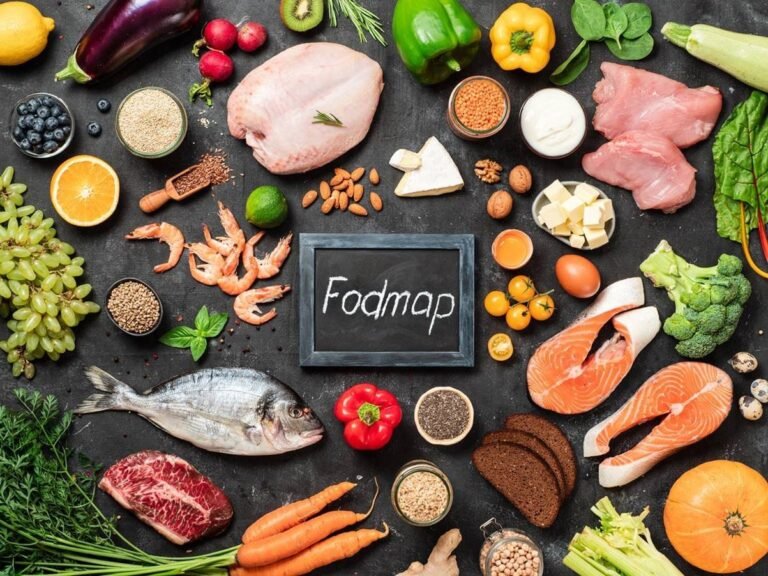The keto diet, also known as the ketogenic diet, has gained attention for its potential health benefits and weight management capabilities. Unlike traditional diets focused on cutting calories, this emphasizes reducing carbohydrate intake while increasing fat consumption and including moderate protein.
This transition leads to a metabolic state called ketosis, where the body breaks down stored fats into ketones for energy. This shift can result in effects like weight loss, improved insulin sensitivity, and potential benefits for certain neurological conditions.
Within the framework of a typical ketogenic diet, approximately 70-75% of daily fuel derives from fats, while proteins contribute 20-25%, and carbohydrates constitute a mere 5-10%. This composition aims to maintain ketosis, where the body effectively burns fat for energy.
Those considering the diet are advised to consult healthcare professionals or dietitians, especially if they have health concerns. This step is crucial, especially for those with pre-existing conditions, ensuring that dietary changes align well with their unique needs.
This overview provides a brief insight and its core principles. Yet, before embracing any dietary changes, seeking guidance from professionals is essential. This ensures that the chosen dietary path harmonizes with personal health goals and requirements, promoting a balanced and informed approach.
These are ways you can do Keto Diet
Certainly, there are several approaches you can take to follow a keto diet. Here are some ways to implement the keto diet effectively:
- Standard Ketogenic Diet (SKD): This is the most common and widely used version of the keto diet. It involves consuming a high amount of fats, a moderate amount of protein, and very low carbohydrates. The typical macronutrient ratio is approximately 70-75% fats, 20-25% protein, and 5-10% carbohydrates.
- Targeted Ketogenic Diet (TKD): This approach allows for slightly higher carbohydrate intake around periods of increased physical activity. For instance, you might consume a small amount of easily digestible carbohydrates before a workout to provide energy without disrupting ketosis.
- Cyclical Ketogenic Diet (CKD): With this approach, you cycle between periods of strict keto eating and higher carbohydrate intake. For example, you might follow a strict keto diet for five days and then have a couple of higher carbohydrate days. This can be useful for athletes or those with intense training regimens.
- High-Protein Ketogenic Diet: This variation maintains the same high-fat, low-carb principles but places a greater emphasis on protein consumption. The macronutrient ratio might be around 60-65% fats, 30-35% protein, and 5-10% carbohydrates.
- Vegetarian or Vegan Ketogenic Diet: While animal products are often a primary source of fats and protein in the keto diet, it’s possible to follow a vegetarian or vegan version. Plant-based fats, such as avocados, nuts, and coconut oil, can be emphasized, and non-animal sources of protein can be included.
More other ways you can do keto diet are:
- Lazy Keto: This approach focuses primarily on carbohydrate restriction, with less attention paid to tracking exact macronutrient ratios. People following lazy keto generally avoid high-carb foods and prioritize fats and proteins but might not track their intake as rigorously.
- Whole Foods vs. Processed Foods: Regardless of the specific version you choose, prioritizing whole, nutrient-dense foods is crucial. Aim for quality sources of fats and proteins, along with low-carb vegetables.
- Meal Planning and Prepping: Planning meals and snacks in advance can help you stay on track and make appropriate food choices. This is especially important for the keto diet, as it can be challenging to find suitable options when dining out.
- Reading Labels: Carbohydrates can hide in unexpected places, so become adept at reading food labels to identify hidden sources of carbs in packaged foods.
- Hydration and Electrolytes: The keto diet can lead to increased water loss and electrolyte imbalances. Stay well-hydrated and consider supplementing with electrolytes as needed.
Consulting with a healthcare professional or registered dietitian before starting the keto diet is a wise step, especially if you have any underlying health conditions or concerns. They can help you tailor the diet to your specific needs and guide you on making balanced and sustainable dietary choices.
Positive and Negative Effects of Keto Diet
The keto diet has garnered attention for both its potential positive effects and its potential negative effects. It’s important to note that individual experiences can vary widely, and what might be positive for one person could be negative for another. Here’s an overview of some of the commonly reported positive and negative effects of the keto diet:
The positive effect of Keto Diet
- Weight Loss: By reducing carbohydrate intake and shifting the body into ketosis, the diet can lead to increased fat burning and decreased appetite, resulting in weight loss for many individuals.
- Improved Blood Sugar Control: Some studies suggest that the keto diet may help improve insulin sensitivity and blood sugar levels, which could be beneficial for people with type 2 diabetes or those at risk of developing diabetes.
- Increased HDL Cholesterol: The keto diet can lead to an increase in high-density lipoprotein (HDL) cholesterol, often referred to as “good” cholesterol. This is generally seen as positive for heart health.
- Potential for Epilepsy Management: The keto diet originated as a therapeutic approach for epilepsy management, particularly in children who don’t respond well to medication. It has shown success in reducing the frequency and severity of seizures in some cases.
- Enhanced Mental Clarity and Focus: Some people report improved cognitive function, mental clarity, and focus when following a keto diet. This might be due to the brain’s utilization of ketones as an alternative energy source.
The negative effect of Keto Diet
- Keto Flu: Many individuals experience what’s commonly known as the “keto flu” when transitioning into the keto diet. This can include symptoms like fatigue, headache, nausea, irritability, and muscle cramps as the body adapts to using ketones for energy.
- Nutritional Deficiencies: Severely restricting carbohydrate intake can lead to deficiencies in important nutrients such as fiber, vitamins, and minerals. It’s essential to plan the diet carefully to ensure you’re getting a well-rounded intake of nutrients.
- Gastrointestinal Issues: Some people may experience digestive issues like constipation, bloating, or diarrhea when starting the keto diet. These can be attributed to changes in dietary fiber and gut bacteria.
- Risk of “Bad” Cholesterol Increase: While HDL cholesterol tends to increase on the keto diet, there can also be an increase in low-density lipoprotein (LDL) cholesterol, which is associated with heart disease risk.
- Social and Lifestyle Challenges: Following a strict keto diet can be challenging in social situations and when dining out. It may require careful planning and can limit food choices.
- Loss of Muscle Mass: Severely restricting carbohydrates might lead to muscle loss, especially if protein intake isn’t adequate. This can be detrimental for those aiming to maintain or build muscle mass.
- Ketosis Risks: Prolonged and extreme ketosis can lead to a condition called ketoacidosis, which is dangerous and primarily associated with type 1 diabetes. This is different from nutritional ketosis, which is the goal of the keto diet.
It’s important to approach the keto diet with caution, especially if you have pre-existing health conditions or concerns. Before starting any significant dietary changes, consulting with a healthcare professional or registered dietitian is advisable. They can help you assess whether the keto diet is suitable for you, guide you on proper implementation, and monitor your health throughout the process.
Foods that you can eat when you are in keto diet

The keto diet focuses on high-fat, low-carbohydrate foods to encourage ketosis, where the body uses fats for energy instead of carbohydrates. Here’s a list of foods that are typically included in a keto diet:

Fats and Oils:
- Avocado and avocado oil
- Olive oil
- Coconut oil
- Butter and ghee
- Heavy cream
- MCT oil (medium-chain triglycerides)
- Nuts and seeds (e.g., cashews, almond, chia seeds)
Proteins:
- Meat (e.g., beef, pork, lamb)
- Poultry (e.g., chicken, turkey, duck)
- Fish and seafood (e.g., salmon, tuna, shrimp)
- Eggs
- Bacon
- Opting for grass-fed and organic choices is favored when accessible.
Dairy:
- Cheese (hard cheeses like cheddar, mozzarella, cream cheese)
- Greek yogurt (plain, full-fat, and in moderation)
- Cottage cheese (full-fat and in moderation)
Low-Carb Vegetables:
- Leafy greens (e.g., spinach, kale, lettuce)
- Cruciferous vegetables (e.g., broccoli, cauliflower, Brussels sprouts)
- Zucchini
- Bell peppers
- Asparagus
- Green beans
Berries (in moderation):
- Strawberries
- Blueberries
- Raspberries
- Blackberries
Other Foods:
- Avocado (technically a fruit)
- Olives
- Dark chocolate (high cocoa content, in moderation)
- Unsweetened nut butters (e.g., almond butter, peanut butter)
Beverages:
- Water
- Herbal tea
- Black coffee (without added sugar)
- Unsweetened milk that are non-dairy alternatives
Recognize that while the keto diet highlights fats, not all fats are equal in quality. Focus on healthy fats from sources like avocados, nuts, and olive oil, while limiting unhealthy saturated and trans fats.
When following a keto diet, it’s essential to read labels and be aware of the carbohydrate content in foods. Carbohydrates can add up quickly, so monitoring your intake is crucial to staying within your daily carb limit.
Remember that individual needs and preferences vary, so it’s important to create a balanced and sustainable keto meal plan that aligns with your dietary preferences and health goals. Additionally, consulting with a healthcare professional or registered dietitian before making significant dietary changes is recommended to ensure the diet is appropriate for your individual circumstances.
Conclusion
Keto diet offers a range of potential benefits that have captured the attention of health enthusiasts and researchers alike. By significantly reducing carbohydrate intake and promoting the utilization of fats for energy, the keto diet has demonstrated its effectiveness in aiding weight loss, as the body taps into stored fat reserves for fuel. Moreover, the diet’s ability to enhance insulin sensitivity and regulate blood sugar levels suggests its potential for managing conditions like type 2 diabetes. Additionally, the ketogenic diet may foster an increase in beneficial HDL cholesterol levels and promote improved cognitive function, contributing to enhanced mental clarity and focus. However, it’s important to approach the keto diet with caution, as it can be accompanied by short-term challenges such as the “keto flu” and possible long-term concerns regarding nutritional imbalances and heart health. As with any dietary approach, seeking guidance from healthcare professionals is crucial to ensure that the keto diet is tailored to individual needs and pursued safely to harness its potential benefits.
You can also check out more about Diet through this blog:






















